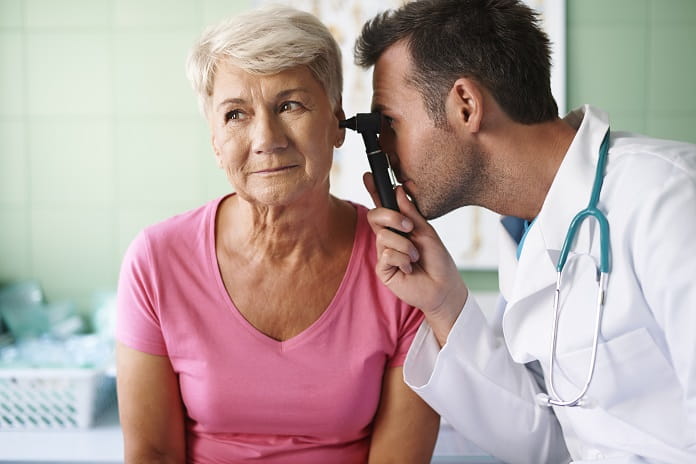Earaches are common in children, and they can frequently occur in adults.
Ear pain, also known as otalgia, can originate from the inside (primary) or outside (secondary) of the ear.
Not all earaches need medication.
There are many at-home therapies and natural remedies that may help soothe an earache.
What causes earaches?
Earaches can be caused by bacterial infections or can come from other primary sources, which can include the nerves leading to the head, neck, chest, and abdomen.
Other common causes include cavities, earwax build-up, sinus infections, teeth grinding, and inflamed tonsils.
Sometimes ear pain can cause other symptoms such as a sore throat.
Allergies, tonsilitis, and acid reflux can irritate both the throat and the ears.
These conditions can induce pain in the ears and a fever in the body.
They can also lead to postnasal drip, where mucus drains into the throat and causes irritation and pain.
Different types of earaches
The eustachian tubes are tubes that run from the middle ear to the throat.
Eustachian tubes regulate pressure in the ear. The tubes are small and can get plugged in for a variety of reasons.
Once blocked, they can cause eustachian tube dysfunction (ETD). Symptoms of ETD include hearing difficulties and pain.
Swimmer’s ear, an infection of the outer ear (otitis externa), happens when water stays in the ear after swimming. The moist environment can cause bacterial growth.
Shoving cotton swabs, fingers, and other objects in the ear can also cause Swimmer’s ear by damaging tissue inside the ear.
Itching, redness, discomfort, and fluid drainage can all be mild symptoms.
Moderate and advanced forms of the condition can cause severe redness, swelling, and pain.
The most commonly seen earache is middle ear infections or acute otitis media. It most commonly affects children 6-18 months old, and approximately 31 million cases are reported each year.
Reports show that by the age of seven, about 93% of all children will have had a middle ear infection.
How to diagnose an earache
Typically, when a child or adult is treated for ear pain, the doctor looks into the patient’s medical history, for smoking and alcohol use habits, and assesses the earache.
Several routine questions are asked: where the location of the pain is, how long it has been, what makes it better or worse if it has happened before, and if there are any other symptoms.
People with earaches sometimes experience pain when chewing, vertigo (a spinning or swaying feeling), or gastroesophageal reflux.
Other symptoms may include fevers, hearing loss, and general sickness.
Pain can happen from different stretch and pressure stimulations or from toxic products of inflammation. Sometimes changes in air pressure, when on an airplane or driving in high altitudes, can cause earaches.
This ear pain can be alleviated by chewing gum. If the pain is continuous and worsening, then it is more likely to be caused by an infection of primary origin.
Whereas not continuous or steady pain usually comes from secondary origins.
Natural remedies for earache
Physicians can prescribe antibiotics or other treatments, but not all earaches need medication.
There are many at-home therapies and natural remedies for earaches.
Herbal medicines
Herbal medicines have become quite popular, and there have been studies showing their effectiveness in treating pain.
Otikon is a naturopathic herbal extract that has recently been used to manage pain associated with middle ear infections.
It was shown to be as powerful as using over-the-counter anesthetic ear drops, which are a go-to prescription for many.
Warm and cold treatments
Ice and heat are widely used earache management strategies.
Using a cold or warm compress can help relieve ear pain. Cold compresses can be either cold towels or ice packs.
Cold towels are made by dampening a towel with cold water and placing it in the freezer t for a few minutes to become cold.
Cold temperatures can numb the area and reduce any swelling, inflammation, or bleeding.
Warm compresses are made by dampening a towel with warm water.
Heating pads are also an alternative for alleviating symptoms. Heat brings more blood and nutrients to the area and helps relax the ear muscles.
Laying a cold or hot compress over the ear may help relieve pain.
Different temperatures should be tried to find what works best.
Chiropractic or massage
Earaches caused by pressure, jaw tension, and other muscle conditions can be alleviated by going to a chiropractor.
Massages surrounding the affected area also help with radiating jaw-to-ear pain and headaches.
Posture changes to align the ears and nose in an upright position may also be helpful.
Sleeping or resting sitting up may also relieve some pressure when there is a pain in the ears.
Earaches typically get better on their own.
It is important to call a doctor if the fever gets worse, there is swelling, or the pain is accompanied by dizziness and headache.
It is also important to see your doctor if symptoms last longer than 2-3 days.
References:
Ear infections. (n.d.). Retrieved January 15, 2021, from https://www.nhs.uk/conditions/ear-infections/
Froehle RM. Ear infection: a retrospective study examining improvement from chiropractic care and analyzing for influencing factors. J Manipulative Physiol Ther. 1996 Mar-Apr;19(3):169-77. PMID: 8728460.
Sarrell EM, Mandelberg A, Cohen HA. Efficacy of Naturopathic Extracts in the Management of Ear Pain Associated With Acute Otitis Media. Arch Pediatr Adolesc Med. 2001;155(7):796–799. doi:10.1001/archpedi.155.7.796
Schilder AG, Bhutta MF, Butler CC, Holy C, Levine LH, Kvaerner KJ, Norman G, Pennings RJ, Poe D, Silvola JT, Sudhoff H, Lund VJ. Eustachian tube dysfunction: consensus statement on definition, types, clinical presentation and diagnosis. Clin Otolaryngol. 2015 Oct;40(5):407-11. doi: 10.1111/coa.12475. PMID: 26347263; PMCID: PMC4600223.



